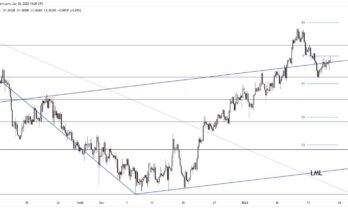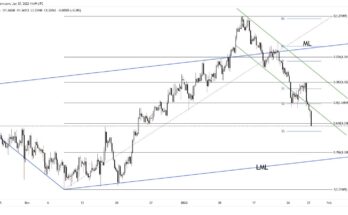Asian stocks, with the exception of Shanghai closed out the week in positive territory, lifted by US manufacturing data, though gains were limited as investors remained concerned about China’s economic growth.
In minutes released from the Bank of Japan, the central bank provided little hint of the need for further monetary easing as it will employ the approach of wait-and-see when the sales tax hike will be enacted in April. The key concern for the central bank will be consumer spending which lagged expectations in December at 0.7% and it will be vital for policymakers to motivate corporate to pass on profits to their workers in the form of higher wages.
In assessing its asset purchases, it was a unanimous decision to maintain its purchases at a pace of 60-70 trillion yen per year and reiterated its goal to raise inflation to its target rate of 2% to finally lift Japan out of disinflation, which has plagued the nation for 15 years. The yen continued to trade in a narrow range, looking to target next level of resistance at 102.74 while support is aimed at 101.53.
The euro traded sideways overnight around the 1.3700 handle, with no clear direction as weak purchasing managers index weighed on the currency. The lack of tier one data will leave the pair of EUR/USD to trade on broader market themes – with the focus on the G20 meetings in Sydney where developed economies will defend the tightening of global liquidity, developments in the Ukraine and Monday’s inflation release. On a technical basis, a breach of 1.3663 will bring forth 1.3629 and then 1.3595. On the flip side, resistance is located at 1.3741, 1.3775 and followed with 1.3810.
In the UK, retail sales contracted 1.5% in January, although when compared to a year ago, sales remained 4.3% higher. The less than stellar news led GBP/USD to reach a low of 1.6613 but the pair has since retraced to 1.6675 area.
Cable has been burdened this week with a slew of unsupportive data , as evidenced by inflation below the Bank of England’s target of 2% and with unemployment increasing from 7.1% to 7.2%. A close above 1.6660 will open the door to 1.6694 and 1.6736. On the downside, support is placed at 1.6618, 1.6584 and 1.6542.
As we head into the North American session, inflation and retail sales data from Canada provided mixed results. On one hand, retail sales for December declined 1.8%, much sharper than the -0.4% expected. Retail sales ex autos fared no better at -1.4% from its previous reading of 0.3%. The silver lining in the data set this morning came in the form of inflation data where CPI on a monthly basis in January edged up to 0.3%, beating consensus of 0.1%.
On an annualized basis, inflation rose to 1.5% from 1.2% in December. The Canadian dollar which has lost 2% in the last three sessions has bought a slight reprieve with improved inflation data as it represents an important risk heading into the next Bank of Canada meeting slated for March 5th. Despite today’s release, Canada’s domestic picture remains weak which will likely force the Bank of Canada to maintain its dovish tone.
Other factors weighing on the loonie include concerns over the global growth outlook, in particular China, the potential delay in the Keystone decision and general bearish sentiment on the loonie. The Canadian dollar is down 0.48% at time of writing and looks to target the year-to-date closing high of 1.1171 while support is situated at today’s open of 1.1099.
By Cheryl Girling of Cambridge Mercantile Group
Further reading:Â 5 Essential Steps to Prepare for Live Trading



